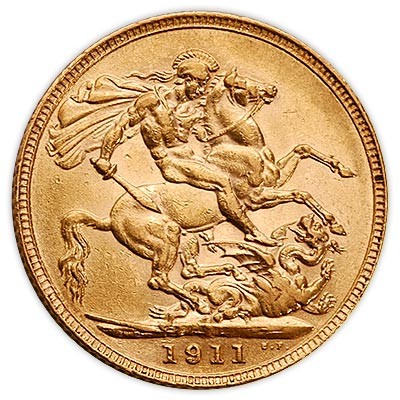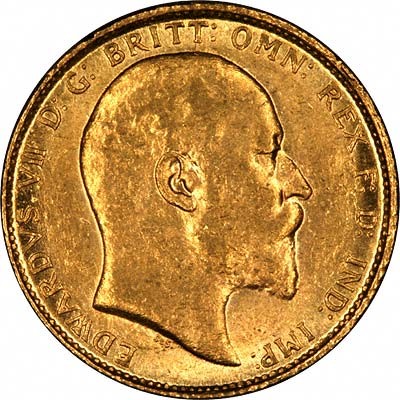Why you should buy British gold sovereigns
Post on: 29 Апрель, 2015 No Comment

The current design of the gold sovereign was introduced in 1816 under George III
At MoneyWeek, we’re long-standing fans of investing in gold. We think it’s a great way to provide insurance against any future financial crisis. Or inflation.
If you want a truly diversified portfolio, invest some of your assets in gold.
Granted, the gold price will move up and down in the future, but one day it will probably pass the inflation-adjusted high of $2,400/oz set in 1980.
How should you invest in gold?
Trouble is, if you’ve decided to invest in gold, you have a further decision to make. You’ve got to decide how you’re going to invest in gold.
There are lots of different options. You could invest in a gold exchange-traded fund (ETF) – a fund that does nothing but hold gold. Or buy shares in gold-mining companies. Or buy gold bars or coins.
You could also choose to invest in semi-numismatic coins. These are coins that aren’t just valuable for their gold content. The coins also appeal to collectors who are interested in coins and banknotes.
Just as it’s a good idea to diversify your portfolio across a wide range of assets including equities and bonds, it may also be a good idea to diversify your gold holdings across two or three types of gold investment.
Having eggs in various gold baskets is probably the most sensible and prudent strategy.
As part of this mix, older gold coins should be looked at.
Classic European and world gold coinage is an often overlooked, but extremely important sector in today’s gold market. These coins are rare which means they have more potential to appreciate in price – yet, they can often be bought at bullion prices.
Crucially, you can also save tax by investing in gold. Gold bullion and some gold coins are exempt from VAT, whilst post-1837 British sovereigns and Britannia coins are exempt from Capital Gains Tax (CGT). That’s because these post-1837 sovereigns and Britannias are legal tender.
If you’re wondering which coins are exempt from VAT, the rules are a little complex. If a coin is bought as a investment in gold bullion, then it should normally be exempt from VAT. However, if a coin is sold for more than 180% of its gold-value content, it’s clearly attractive as a collector’s item and is then subject to VAT.
Often the price of gold coins is slightly higher than modern gold bullion, but these coins offer many advantages. They’re often scarce, and can have aesthetic value as well as historical significance.
When you look at semi-numismatic gold coins, the British sovereign (originally the one pound coin) is the most widely traded.
There is constant and excellent liquidity in most countries in the world. For the investor looking for slight leverage to the gold price with the potential for the premium (numismatic value) to rise, British sovereigns are a good way to invest in gold.
History of the British gold sovereign
The first British gold sovereigns were minted more than 500 years ago. They were minted under Tudor king Henry VII in 1489.
The current design type with Saint George slaying a dragon on the reverse and the monarch on the front was introduced nearly 200 years ago in 1816 under George III. The sovereign was minted almost continuously from that date until 1932 when Britain went off the gold standard.

British sovereign ‘kings’ minted during the reigns of Edward VII and George V are probably the most widely owned and recognised pre-1933 gold coins.
In 1816, the British gold sovereign as we know it today was first introduced, and as the British Empire expanded under Queen Victoria during the 1800s, this coin came to be the world’s most widely distributed gold coin.
Minted originally in London, the sovereign came to be minted all over the world as Australia and South Africa came to be large gold producers. Mints in Pretoria, Bombay, Ottawa, Melbourne, Sydney and Perth minted thousands of sovereigns during the late 1800s and early 1900s.
The design of Saint George astride his brave steed, slaying the dragon, is common to the reverse of all variations of the coin.
Gold sovereigns: conclusion
It is estimated that only 1% of all gold sovereigns that have ever been minted are still in collectible condition. It is this relative rarity in relation to bullion coins and bars that leads to leverage whereby, in gold bull markets, the value of these coins increases by more that the actual price of gold.
Unlike paper investments or speculations, British gold sovereigns have a real and permanent tangible value. Therefore, they offer two ways to build wealth. They can offer the best of bullion and numismatics in one investment. They contain the intrinsic security of bullion or precious metal in a pure form and can also offer additional profit potential due to their aesthetic and historical appeal.
A small allocation of British gold sovereigns can be a useful component of a diversified gold portfolio.
How to buy gold in 2015
At MoneyWeek, we’ve always believed in the power of gold. It’s been exchanged for thousands of years & a proven store of value. We think you should put at least a proportion of your wealth in the metal.
To claim your free report and start receiving MoneyWeek’s free daily email Money Morning, simply enter your email address below.














